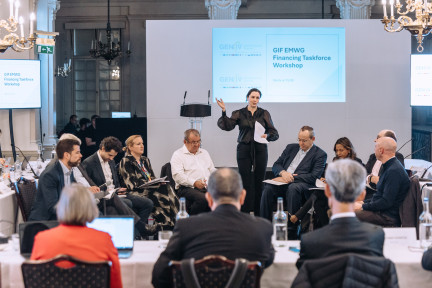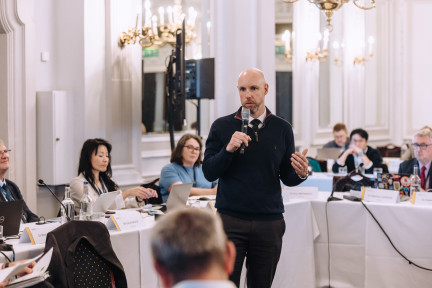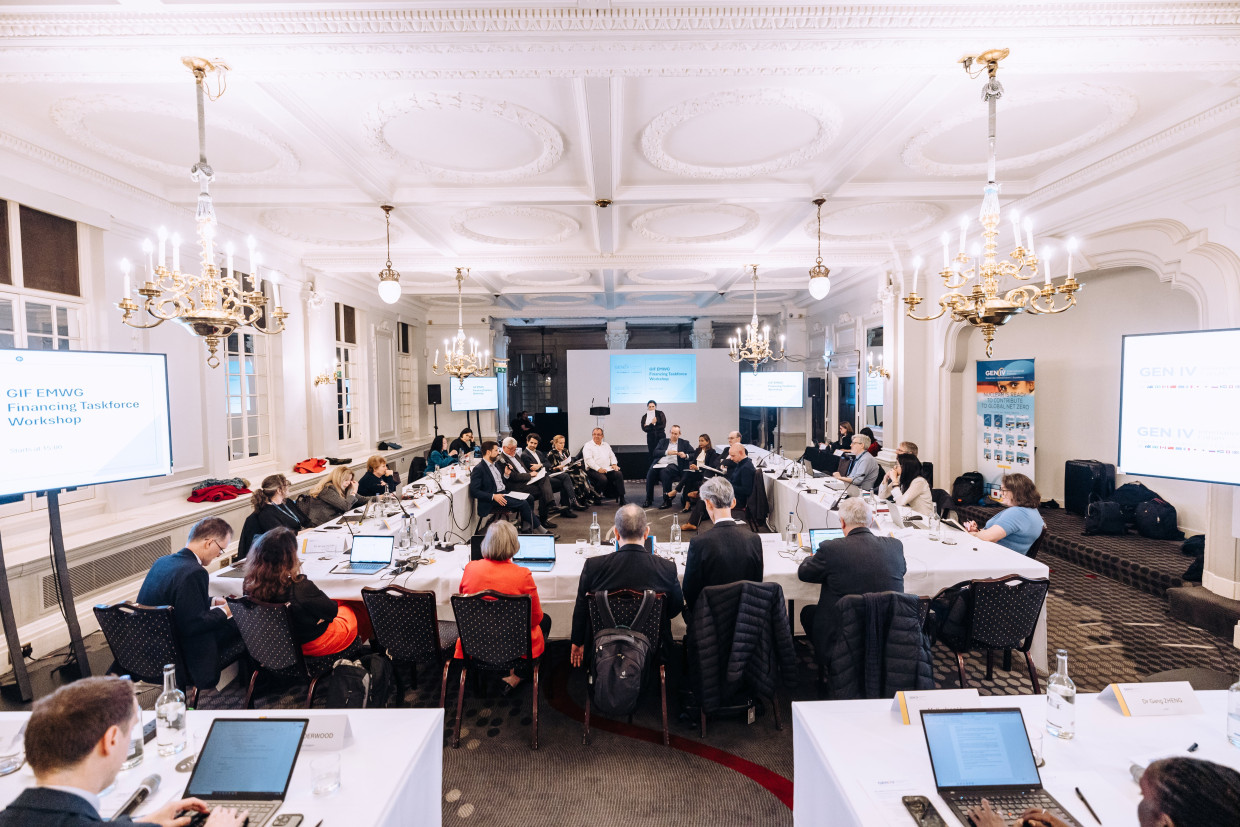Workshop - GIF EMWG Financing Taskforce Workshop - London
The Generation IV International Forum (GIF) Economics Modelling Working Group hosted the Financing Taskforce Workshop on October 15, 2024, in London, UK. The workshop explored the distinctions between technology companies and project companies, their business cases, risk management, investor strategies, and the role of governments. Through interactive role-playing scenarios, participants engaged in discussions on financing, development, and deployment challenges for advanced nuclear technologies.
The full proceedings of the workshop are accesible on this page.
Overview of the workshop
Generation IV International Forum (GIF) Economics Modelling Working Group organized the Financing Taskforce Workshop on October 15, 2024, in London, UK. The aim of the workshop was to highlight:
the clear difference between a company developing and selling its technology (a Technology Company) and a Capital Project Development Company (a Project Company)
the business case for each including revenue and potential IRRs;
the importance of risk allocation, mitigation and management;
different investor strategies; and
the role of governments (particularly in a FOAK), regulators, planning authorities etc.


The workshop involved generic role-playing between a nuclear technology developer, a project developer, and the various types of investors, followed by an exchange of questions and comments from the audience. The session involves two role-playing scenarios with a brief interlude in between.
- Scenario 1: A technology company pitched to government investors, seeking funding and support. The focus was on the company's technological developments and its progression towards creating technology ready for production.
- Interlude: A brief segment, where the technology company transitions to selling its technology to a project company.
- Scenario 2: The project company (looking to develop, build, own and operate a nuclear power plant)) engages with the technology company. The challenges and industry-specific issues related to this collaboration will be discussed.
The role play was designed to simulate the multifaceted challenges and opportunities associated with financing, developing, and deploying advanced nuclear technologies. It brought together key stakeholders to navigate the complexities of nuclear project development.
The role play was set in an established nuclear company with an established nuclear regulator.
Key Findings
Key findings from the role play includes the following:
- Government Support is Crucial: The role of government in financing, regulating, and supporting nuclear energy projects was emphasized throughout. Mechanisms like CfDs (Contracts for Difference), RAB (Regulated Asset Base), and government guarantees are critical for providing investor confidence and bridging the funding gap for first-of-a-kind (FOAK) projects. Government backing also plays a vital role in de-risking construction and operational phases.
- The Challenges of FOAK Projects: First-of-a-kind projects face significant hurdles, including technology risk, long lead times, and high capital costs. These factors make them unattractive to many investors without mechanisms to mitigate risk. The importance of FOAK success as a foundation for subsequent projects (next-of-a-kind or NOAK) was noted, but success requires clear pathways for reducing costs and risks over time.
- Investor Concerns: Investors, including pension funds, private equity, and venture capital, highlighted their need for predictable returns, stable revenue streams, and clear risk-sharing structures. While there is interest in nuclear as part of a broader energy transition, many investors remain cautious due to regulatory, construction, and operational risks.
- Technology Companies financing – high risk high return: Financing for technology companies is likely to come from Philanthropists or Venture Capitalists (and potentially Private Equity for the later TRL development). While Philanthropists may invest for philanthropic and benevolent reasons most investors are looking to high returns. The money by milestones approach has been deployed successfully for a number of fission and fusion companies. These investors are taking significant risk as a number of technologies will fail which justifies the high returns.
Project Companies financing – lower risk, requiring predictability and government support: Capital projects which are established well, have significant support from Government (particularly for the FOAK) and have predictable funding support will appeal to institutional investors from private equity to pension funds. The returns are likely to be lower that the returns expected by investors in technology companies. Institutional investors are looking for long term predictable returns. - Regulatory and Licensing Challenges: Regulatory hurdles, including the generic design assessments and site-specific approvals, were highlighted as significant barriers. These processes require substantial time and resources but are necessary for ensuring public safety and building trust. Countries without established nuclear regulatory frameworks face additional delays and complexities.
- Supply Chain and Fuel Security: The importance of secure supply chains for components, fuel, and waste management was emphasized. Governments and companies must address fuel sourcing, spent fuel disposal, and decommissioning in their project planning, as these factors significantly impact project feasibility and ESG considerations.
- ESG and Public Perception: While nuclear scores highly on decarbonization, concerns around waste management, biodiversity, and water usage remain barriers to its acceptance in ESG frameworks. Addressing public and investor skepticism is crucial for integrating nuclear into sustainable investment portfolios.
- Non-Electrical Applications: There was interest in exploring non-electrical uses of nuclear energy, such as hydrogen production and industrial heat, but these applications were deemed premature. The focus should remain on successfully deploying nuclear for electricity generation before expanding into additional markets.
- International Collaboration: The role play underscored the importance of international efforts to develop nuclear technologies, particularly for global decarbonization. Countries without established nuclear industries can benefit from "copy-pasting" regulatory frameworks and leveraging expertise from more experienced nations. Reference was also made to the work being undertaken to change the approach of the World Bank – its current approach to nuclear is a major barrier in making nuclear available to all.
- Technology Consolidation: With many AMR and SMR designs under development, the market is expected to consolidate around a few proven technologies. Companies must focus on delivering reliable, cost-effective solutions rather than competing to be first.
- Balancing Risks and Returns: The discussion highlighted the delicate balance between attracting private capital and managing risks. Investors want high returns but are wary of the uncertainties associated with nuclear projects. Mechanisms like RAB and CfD can help bridge this gap, but aligning public and private sector interests remains challenging.
Conclusion

While nuclear is seen as a key component of achieving Net Zero, stakeholders must address significant challenges to unlock its full potential, in particular in the realm of financing. The role play highlighted the complexity of financing, developing, and deploying advanced nuclear technologies. Success hinges on robust government support, investor confidence, secure supply chains, and effective regulatory frameworks. The involvement of a dedicated project company is critical to bridging the gap between technology development and large-scale deployment, ensuring effective management of risks and responsibilities.